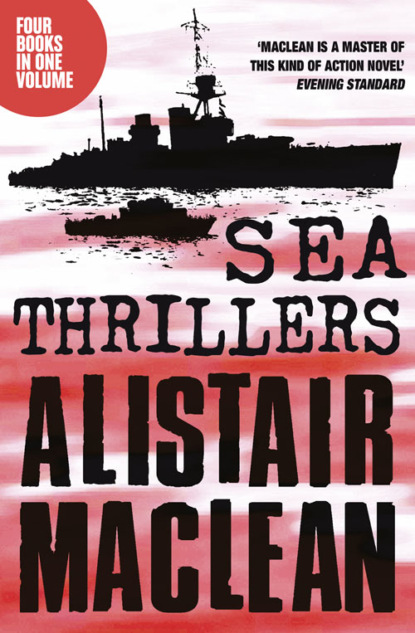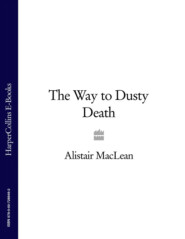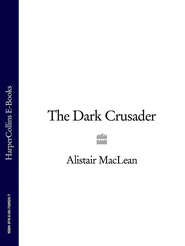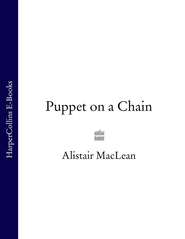По всем вопросам обращайтесь на: info@litportal.ru
(©) 2003-2025.
✖
Alistair MacLean Sea Thrillers 4-Book Collection: San Andreas, The Golden Rendezvous, Seawitch, Santorini
Автор
Год написания книги
2019
Настройки чтения
Размер шрифта
Высота строк
Поля
It was upon those tuberculosis-ridden seamen, ill-housed and abominably fed, that Britain depended to bring food, oil, arms and ammunition to its shores and those of its allies. It was the sine qua non conduit, the artery, the lifeline upon which Britain was absolutely dependent: without those ships and men Britain would assuredly have gone under. It is worth noting that those men’s contracts ended when the torpedo, mine or bomb struck. In wartime as in peacetime the owners protected their profits to the bitter end: the seaman’s wages were abruptly terminated when his ship was sunk, no matter where, how, or in what unimaginable circumstances. When an owner’s ship went down he shed no salt tears, for his ships were insured, as often as not grossly over-insured: when a seaman’s ship went down he was fired.
The Government, Admiralty and ship-owners of that time should have been deeply ashamed of themselves: if they were, they manfully concealed their distress: compared to prestige, glory and profits, the conditions of life and the horrors of death of the men of the Merchant Navy were a very secondary consideration indeed.
The people of Britain cannot be condemned. With the exception of the families and friends of the Merchant Navy and the splendid volunteer charitable organizations that were set up to help survivors – such humanitarian trifles were of no concern to owners or Whitehall – very few knew or even suspected what was going on.
2 As a lifeline, a conduit and an artery, the Liberty Ships were on a par with the British Merchant Navy: without them, Britain would have assuredly gone down in defeat. All the food, oil, arms and ammunition which overseas countries – especially the United States – were eager and willing to supply were useless without the ships in which to transport them. After less than two years of war it was bleakly apparent that because of the deadly attrition of the British Merchant fleets there must soon, and inevitably, be no ships left to carry anything and that Britain would, inexorably and not slowly, be starved into surrender. In 1940, even the indomitable Winston Churchill despaired of survival, far less ultimate victory. Typically, the period of despair was brief but heaven only knew that he had cause for it.
In nine hundred years, Britain, of all the countries in the world, had never been invaded, but in the darkest days of the war such invasion seemed not only perilously close but inevitable. Looking back today over a span of forty and more years it seems inconceivable and impossible that the country survived: had the facts been made public, which they weren’t, it almost certainly would not.
British shipping losses were appalling beyond belief and beggar even the most active imagination. In the first eleven months of the war Britain lost 1,500,000 tons of shipping. In some of the early months of 1941, losses averaged close on 500,000 tons. In 1942, the darkest period of the war at sea, 6,250,000 tons of shipping went to the bottom. Even working at full stretch British shipyards could replace only a small fraction of those enormous losses. That, together with the fact that the number of operational U-boats in that same grim year rose from 91 to 212 made it certain that, by the law of diminishing returns, the British Merchant Navy would eventually cease to exist unless a miracle occurred.
The name of the miracle was Liberty Ships. To anyone who can recall those days the term Liberty Ships was automatically and immediately linked with Henry Kaiser. Kaiser – in the circumstances it was ironic that he should bear the same name as the title of the late German Emperor – was an American engineer of unquestioned genius. His career until then had been a remarkably impressive one: he had been a key figure in the construction of the Hoover and Coulee dams and the San Francisco bridge. It is questionable whether Henry Kaiser could have designed a rowing-boat but that was of no matter. He almost certainly had a better understanding of prefabrication based on a standard and repeatable design than any other person in the world at the time and did not hesitate to send out contracts for part-construction to factories in the United States that lay hundreds of miles from the sea. Those sections were transmitted to shipyards for assembly, originally to Richmond, California, where Kaiser directed the Permanente Cement Co., and eventually to other shipyards under Kaiser’s control. Kaiser’s turnover and speed of production stopped just short of the incredible: he did for the production of merchant vessels what Henry Ford’s assembly lines had done for the Model T Ford. Until then, as far as ocean-going vessels were concerned, mass production had been an alien concept.
Mistakenly, but understandably, there existed a widely-held belief that the Liberty Ships originated in the design offices of the Kaiser shipyards. The design and prototypes were, in fact, English and were conceived by the design staff of the shipbuilders J.L. Thompson of North Sands, Sunderland. The first of what was to become a very long line indeed, the Embassage, was completed in 1935 – the prefix ‘Liberty’ did not come into existence for another seven years, and only for some of the Kaiser-built vessels. The Embassage, 9,300 tons, with a raked stem and rounded stern and three triple-expansion coal-burning engines, was a non-starter in the æsthetic stakes, but then J.L. Thompson were not interested in æsthetics: what they had aimed at was a modern, practical and economical cargo vessel and in this they succeeded admirably. Twenty-four more similar vessels were built before the outbreak of war.
Those ships were built in Britain, the United States and Canada, the great preponderance in the Kaiser yards. Hull designs remained identical but the Americans, and only the Americans, introduced two changes which they regarded as refinements. One of those changes, using oil instead of coal as fuel, may well have been: the other, which concerned the accommodation of officers and crew, was not. While the Canadians and British retained the original concept of having the living quarters both fore and aft the Americans elected to have all the crew, officers and men – and the navigating bridge – in a superstructure surrounding the funnel. In retrospect – hindsight and bitter experience make for a splendid conductor to belated wisdom – it was a blunder. The Americans had all their eggs in one basket.
Those vessels were armed – after a fashion. They had four-inch low-angle and twelve-pounder anti-aircraft guns, neither of which was particularly effective, together with Bofors and rapid-firing Oerlikons: the Oerlikons were deadly in trained hands – but there were few trained hands around. They also had weird devices such as rocket-fired parachutes and cables carrying coils of wire and grenades: these were as dangerous to those using them as the aircraft they were supposed to bring down. Some few of these ships had catapult-launched Hurricane fighters – the nearest equivalent to the suicidal Japanese kamikaze planes that Britain ever had. The pilots could not, of course, return to their ships: they had the uncomfortable option of either baling out or ditching. In the Arctic, in winter, their survival rate was not high.
3 From the air, on the sea and under the sea the Germans, often with brilliance, always with tenacity and ruthlessness, used every means in their power to destroy the Merchant Navy convoys.
Basically, they used five main types of aircraft. Their standard or conventional bomber was the Dornier which flew at pre-determined heights and released their bombs in pre-determined patterns: they were useful planes and had their successes but were not particularly effective.
Much more feared, in ascending order, were the Heinkel, the Heinkel III and the Stuka. The Heinkel was a torpedo-bomber, which attacked at wave-top level, its pilot releasing the torpedo at the last possible moment, then using the lightened weight of his aircraft to lift over the ship it was attacking. Those planes had an unusual degree of immunity from destruction: when the anti-aircraft gunners on the merchant ships peered over the sights of their Oerlikons, Bofors or pom-poms – two-pounders – the thought that ‘He gets me or I get him’ didn’t make for the degree of cool detachment which would have been helpful in the circumstances. In the Arctic winter, those torpedo-bombers were not infrequently at a disadvantage, especially for the gallant but unfortunate pilots who flew them: ice could freeze up their torpedo release mechanisms and their burdened aircraft were unable to lift off over their targets. This made little difference to the equally unfortunate crews of the merchant vessels: whether the torpedo was running free or still attached to the aircraft when it crashed into the ship, the results were equally devastating.
The Heinkel III used glider bombers. These were highly effective, exposed their pilots to a much lesser degree of risk and the bombs, once released, were virtually impossible to shoot down: fortunately for the Merchant Navy, the Germans did not have too many of these highly specialized planes.
The Stuka, the dihedral – gull-winged Junker 87 dive-bomber – was the most feared of all. It was their customary practice to fly at high altitude in level formation, then peel off successively in near-vertical dives. Forty years later, the seamen and soldiers – the Germans used the Junker 87 in every theatre of war – who survived those attacks and are still alive will never forget the sound of the banshee shrieking as the Stuka pilots switched on their sirens in their plummeting dive. The sound, to say the least, was unnerving and considerably reduced the effectiveness of anti-aircraft gunners. The Royal Navy used searchlights, customarily of the 44-inch variety, in an attempt to blind the Stuka pilots, until it was pointed out to them that the pilots, who were well aware of this tactic, used dark glasses to reduce the blinding glare to mere pinpoints of light which enabled them to home in even more accurately on their targets. From the German point of view the Stukas had only one drawback: they were essentially short-range planes and could operate effectively only against convoys moving to the north of Norway en route to Murmansk and Archangel.
But, oddly enough, the most effective air weapon the Germans had was the essentially non-combative Focke-Wulf Condor 200. True, it could and did carry 250-kilo bombs and had a fairly formidable array of machine-guns, but with bombs removed and extra fuel tanks fitted in their place, it became an invaluable reconnaissance plane. For that comparatively early flying era, in the early Forties, its flying range was quite remarkable. Condors flew almost daily from Trondheim, in German-occupied Norway, round the western coast of the British Isles to German-occupied France: more importantly, they were capable of patrolling the Barents Sea, the Greenland Sea and, most damagingly of all, the justly dreaded Denmark Strait, between Iceland and Greenland, for it was through that strait that the Russian-bound convoys from Canada and the United States passed. For such a convoy, the sight of a Condor was the guarantee of inevitable disaster.
Flying high and safely out of reach of antiaircraft fire, the Condor would literally circle the convoy, its crew noting down the number of ships, the convoy’s speed, course and precise latitude and longitude. This information was radioed to Alta Fjord or Trondheim and then transmitted to Lorient, the French HQ of Admiral Karl Doenitz, almost certainly the best submarine C-in-C of his time or any time. From there the information was re-transmitted to the growing submarine wolfpack or packs, instructing them when and where exactly to position themselves to intercept the convoy.
As far as surface warships were concerned, the Germans were more than adequately prepared at the outbreak of war. By the Anglo-German agreement of 1937 Germany could build 100% of the British equivalent of submarines but only 35% of surface ships. In fact they built twice as many submarines and completely ignored the other 35% restriction. The Deutschland, Admiral Graf Spee and Admiral Scheer were nominally 10,000 ton cruisers: they were, in fact, fast and powerful commerce raiders, in effect pocket battleships of a far greater tonnage than purported. The Scharnhorst and Gneisenau, 26,000 ton battle-cruisers, were completed in 1938 and it was in that year that the Bismarck and Tirpitz were laid down in the Blohm and Voess shipyards in Hamburg. Those were the best and most powerful battleships ever built, a statement that remains true to this day. By treaty limitations they were restricted to 35,000 tons: they were, in fact, 53,000 tons.
The Bismarck had a brief but spectacular career, the Tirpitz no career at all. It spent its war holed up in northern Norway, where it none the less performed the invaluable function of tying up major units of the British Home Fleet which feared that the giant battleship might slip its moorings in Alta Fjord and break out into the Atlantic. It was at those moorings that the Tirpitz was ultimately destroyed by ten-ton bombs from RAF Lancasters.
Although the British had a very considerable advantage in battleships, they were, individually, no match for those of the Germans, as was tragically proved when the Bismarck sank the battle-cruiser Hood, pride and darling of the Royal Navy, with a single salvo.
Underwater, the Germans used mines and submarines. Less than three months after the outbreak of war the Germans had come up with a rather unpleasant device – the magnetic mine. Unlike the standard type, which had to come into physical contact with a vessel before being activated, the magnetic mine was set off by the electrical current generated by the ship’s hull. Those mines could be laid by either ships or aircraft and in the first four days after their introduction no fewer than fifteen ships were sent to the bottom – the fact that they were nearly all neutrals seemed of no great concern to the Germans: magnetic mines are very clever devices but not clever enough to discriminate between a neutral and an enemy. The British managed to retrieve one intact, took it to pieces – not without considerable danger to those engaged in the dismantling – and came up with electronic counter-measures which enabled minesweepers to detonate the magnetic mine at a respectful distance.
Submarines, of course, were the most deadly enemies the Merchant Navy had to face. The toll taken in the first three and a half years of war was savage beyond belief. It wasn’t until the early summer of 1943 that the menace was brought under some form of control, but it wasn’t until the end of 1944 – during the two years 1943–4 480 German submarines were destroyed – that those stealthy pursuers and silent killers ceased to be a factor of consequence.
It was inevitable that the U-boats should be selected as the target for hatred and their crews depicted, both during the war and subsequently, as cunning, treacherous and ice-cold murderers, fanatical Nazis to a man, who hunted down unsuspecting innocents, closed in unheard and unseen, destroyed their victims without mercy or compunction, then moved on again, still unheard and unseen. To a limited extent, this view was valid. The pattern for this belief was set on the very first day of the war when the liner Athenia was torpedoed. In no way could the Athenia have been mistaken for anything other than what it was: a peaceful passenger vessel crammed with civilians – men, women and children. This must have been known to the far from gallant Oberleutnant Fritz-Julius Lemp, commander of the German U-boat that sent the Athenia to the bottom. There is no record that Lemp was ever reprimanded for his action.
The same charge of ruthlessness, of course, could have been levelled against Allied submariners – to a lesser extent, admittedly, it is true, but that was only because they had a much more limited choice of targets.
The overall U-boat picture is false. Ruthless Nazis there may have been among the crews but they were a tiny minority: the men were motivated principally by an intense pride in the traditions of the Imperial German Navy. Certainly there were acts of brutality by individual U-boat commanders but there were also acts of humanity, gallantry and compassion. What was undeniable was the immense personal courage and spirit of self-sacrifice of those men. It has to be remembered that, out of a total of 40,000 U-boat submariners, 30,000 died, the most shocking casualty rate in the history of naval warfare. While the actions of those men are not to be condoned, the men themselves are not to be condemned. Ruthless they were – the nature of their job demanded it – but they were brave beyond belief.
Such then were the conditions in which the men of the Merchant Navy had to live and die: such, too, were their enemies, who sought, implacably, to destroy them. The odds against the health and lives of the merchantmen surviving, respectively, their living conditions and the attentions of the enemy were high indeed: theirs was a classic no-win situation. In the circumstances it was an astonishing and commonplace fact that men who had survived two or three torpedoings and sinkings would immediately, on their return to Britain, seek out another ship to take them to sea again. By definition, those men were non-combatants but their endurance, tenacity and determination – they would have laughed at words like gallantry and courage – matched those of the men who hunted them down.
Chapter One (#ulink_ff94444a-5ca5-5c2e-8138-1f8474f37b4b)
Silently, undramatically, without any forewarning, as in any abrupt and unexpected power cut in a city, the lights aboard the San Andreas died in the hour before the dawn. Such blackouts were rare but not unknown and gave rise to no particular alarm as far as the handling and navigation of the vessel were concerned. On the bridge, the binnacle light that illuminated the compass, the chart light and the essential telephone line to the engine-room remained unaffected because, operating as they did on a lower voltage, they had their own separate generator. The overhead lights were on the main generator but this was of no consequence as those lights were switched off: the bridge, any bridge, was always darkened at night. The only item on the bridge that did fail was the Kent screen, an inset circular plate of glass directly ahead of the helmsman which spun at high speed and offered a clear view in all conditions. Third Officer Batesman, the officer of the watch, was unworried: to the best of his belief there were neither land nor ships within a hundred miles of him with the exception of the frigate HMS Andover. He had no idea where the frigate was and it didn’t matter: the frigate always knew where he was, for it was equipped with highly sophisticated radar.
In the operating theatre and recovery room it was a case of business as usual. Although the surrounding sea and sky were still dark as midnight, the hour was not early: in those high latitudes and at that time of year daylight, or what passed for daylight, arrived about 10.00 a.m. In those two rooms, the most important in a hospital ship, for that was what the San Andreas was, battery-powered lights came on automatically when the main power failed. Throughout the rest of the ship emergency lighting was provided by hand-hung nickel-cadmium lamps: a twist of the base of such a lamp provided at least a bare minimum of illumination.
What did give rise to concern was the complete failure of the upper deck lights. The hull of the San Andreas was painted white – more correctly, it had been white but time and the sleet, hail, snow and ice spicules of Arctic storms had eroded the original to something between a dingy off-white and an equally dingy light grey. A green band ran all the way around the hull. Very big red crosses had been painted on both her sides, as well as on the fore and after-decks. During night-time those red crosses were illuminated by powerful floodlights: at that time darkness accounted for twenty hours out of the twenty-four.
Opinion as to the value of those lights was fairly evenly divided. According to the Geneva Convention, those red crosses guaranteed immunity against enemy attacks, and as the San Andreas had so far been reassuringly immune those aboard her who had never been subjected to an enemy attack of any kind tended to believe in the validity of the Geneva Convention. But the crew members who had served aboard before her conversion from a Liberty cargo carrier to her present status regarded the Convention with a very leery eye. To sail at night lit up like a Christmas tree went against all the instincts of men who for years had been conditioned to believe, rightly, that to light a cigarette on the upper deck was to attract the attention of a wandering U-boat. They didn’t trust the lights. They didn’t trust the red crosses. Above all, they didn’t trust the U-boats. There was justification for their cynicism: other hospital boats, they knew, had been less fortunate than they had been but whether those attacks had been deliberate or accidental had never been established. There are no courts of law on the high seas and no independent witnesses. Either from reasons of delicacy or because they thought it pointless the crew never discussed the matter with those who lived in what they regarded as a fool’s paradise – the doctors, the sisters, the nurses and the ward orderlies.
The starboard screen door on the bridge opened and a figure, torch in hand, entered. Batesman said: ‘Captain?’
‘Indeed. One of these days I’ll get to finish my breakfast in peace. Some lamps, will you, Third?’
Captain Bowen was of medium height, running to fat – ’well-built’ was his preferred term – with a cheerful white-bearded face and periwinkle-blue eyes. He was also well past retirement age but had never asked to retire and never been asked to: in both ships and men the Merchant Navy had suffered crippling losses and a new ship could be made in a tiny fraction of the time it took to make a new captain: there weren’t too many Captain Bowens left around.
The three emergency lamps didn’t give much more light than a similar number of candles would have done but it was enough to see just how quickly the Captain’s coat had been covered in snow in the brief seconds it had taken him to cover the distance from the saloon. He removed the coat, shook it out through the doorway and hurriedly closed the door.
‘Bloody generator having one of its fits again,’ Bowen said. He didn’t seem particularly upset about it, but then, no one had ever seen the Captain upset about anything. ‘Kent screen on the blink, of course. No odds. Useless anyway. Heavy snow, thirty knot wind and visibility zero.’ There was a certain satisfaction in Bowen’s voice and neither Batesman nor Hudson, the helmsman, had to ask why. All three belonged to the group of thought that had minimal belief in the Geneva Convention: no plane, ship or submarine could hope to locate them in those conditions. ‘Been through to the engine-room?’
‘I have not.’ Batesman spoke with some feeling and Bowen smiled. Chief Engineer Patterson, a north-easterner from the Newcastle area, had a high pride in his undoubted skill, a temper with a notoriously short fuse and a rooted aversion to being questioned about his activities by anyone as lowly as a third officer. ‘I’ll get the Chief, sir.’
He got the Chief. Bowen took the phone and said: ‘Ah, John. Not having much luck this trip, are we? Overload coil? Brushes? Fuse? Ah! The standby, then – I do hope we’re not out of fuel again.’ Captain Bowen spoke in tones of grave concern and Batesman smiled: every member of the crew, down even to the pantry-boy, knew that Chief Patterson was totally devoid of any sense of humour. Bowen’s reference to fuel referred to the occasion when, with Chief Patterson off duty, the main generator had failed and the young engineer in charge had forgotten to turn the cock on the fuel line to the auxiliary. Patterson’s comments were predictable. With a pained expression on his face, Bowen held the phone a foot from his ear until the crackling in the earpiece had ceased, spoke briefly again, then hung up and said diplomatically: ‘I think Chief Patterson is having rather more trouble than usual in locating electrical faults. Ten minutes, he says.’
Only two minutes later the phone rang.
‘Bad news, for a fiver.’ Bowen lifted the phone, listened briefly, then said: ‘You want a word with me, John? But you are having a word with me … Ah. I see. Very well.’ He hung up. ‘The Chief wants to show me something.’
Bowen did not, as Batesman might have assumed, go to the engine-room. He went, instead, to his cabin where he was joined within a minute by the Chief Engineer. A tall, lean man, with an unremarkable face and a permanent five o’clock shadow, he was, like a number of men who are humourless and unaware of it, given to smiling at frequent intervals and usually at inappropriate moments. He was not, however, smiling at that particular moment. He produced three pieces of what appeared to be black carbon and arranged them on the Captain’s table until they formed an oblong shape.
‘What do you make of that, then?’
‘You know me, John, just a simple seaman. An armature brush for a dynamo or generator or whatever?’
‘Exactly.’ Patterson was much better at being grim than he was at smiling.
‘Hence the power failure?’
‘Nothing to do with the power failure. Overload coil thrown. Short somewhere. Jamieson’s taken a bridge-megger and gone off to locate it. Shouldn’t take him long to locate it.’
This Bowen was prepared to believe. Jamieson, the Second Engineer, was a very bright young man with the unusual distinction of being an A.M.I.E.E. – an Associate Member of the Institute of Electrical Engineers. He said: ‘So this brush comes from the auxiliary generator; it’s broken, you seem unhappy about it, so I take it this is unusual.’
‘Unusual? It’s unknown. At least, I’ve never known of it. The brush is under constant spring-loaded pressure against the face of the armature. There is no way it could have broken in this particular fashion.’
‘Well, it did happen. First time for everything.’ Bowen touched the broken pieces with his finger. ‘A one-off job? Flaw in manufacture?’
Patterson didn’t answer. He dug into an overall pocket, brought out a small metal box, removed the lid and placed the box on the table beside the broken brush. The two brushes inside were identical in shape and size to the one that Patterson had reassembled. Bowen looked at them, pursed his lips, then looked at Patterson.











